Culturally Responsive AAC
What is Culturally Responsive AAC?
Speech-language pathologists have identified the provision of services to children with complex communication needs from culturally and linguistically diverse backgrounds as one of their greatest professional challenges (Light & McNaughton, 2012). In the U.S., many clients in need of AAC services come from culturally and linguistically diverse (CLD) backgrounds. Appropriate AAC service delivery to clients from CLD backgrounds requires not only appropriate technologies but also research-based evidence on the efficacy of intervention approaches (Soto, 2018). It is impossible for a clinician or a teacher to know the languages and cultures of all the clients they serve. But it is possible to create a ‘climate’ where the child is viewed as a whole; where different languages and cultural practices are included and legitimized; where there are materials not only in different modalities but in different languages; and where clients and families feel proud of and build on their home language.
Culturally Responsive AAC Resources
There is an increasing number of online resources available for culturally and linguistically responsive assessments, interventions, and resources for professionals and families of children with complex communication needs. Below is a small curated list of some of the resources that are available. For additional resources, check this Multilingual AAC Toolkit and Padlet.
- Communication Forms and Functions: The Communication Forms and Functions worksheet provides information about the range of communication modes and purposes used by a student/client
- The Communication Sampling and Analysis (CSA) is an assessment tool designed for infants, toddlers, and children with multiple physical, sensory, speech, and cognitive/linguistic challenges.
- The Communication Matrix is a free assessment tool available to help families and professionals easily determine the communication needs of anyone functioning at the early stages of communication. It is available in 12 languages.
- The Dynamic AAC Goals Grid-2 (DAGG-2) provides a systematic means to assess (and reassess) an individual’s current skills in AAC and to assist partners plan for enhancing the AAC user’s communicative independence. It is translated and available in both English and Spanish.
- The AAC Profile (AACP) is an assessment tool that measures sub subjective, functional skills for developing communicative competence using AAC systems; re-evaluates skill level; and monitors progress.
- The MacArthur-Bates Communicative Development Inventories (MBCDI) are parental report instruments that capture important information about a child’s developing languages. It is available in more than 70 languages.
- The Quick AAC Developmental Profile (QUAD) is a tool to manually analyze aided language samples in English. It includes four checklists that focus on the areas of vocabulary, morphology, syntax and function.
- The Ventura County Comprehensive Alternate Language Proficiency Survey for Students with Moderate-Severe Disabilities (VCCALPS) is a survey instrument may be used to assess language proficiency of students with disabilities in both the primary language as well as English. A copy of VCCALPS can be found on their website.
- The Speech and Activity Assessment of Children (SPAA-C) is available in several languages and is designed to collect information about the impact of speech difficulties on children’s lives.
- The Narrative Assessment Profile (NAP) is a tool to assess the following dimensions of narration: topic maintenance, event sequencing, explicitness, referencing, conjunctive cohesion, and fluency.
- The Multilingual Assessment Instrument for Narratives (MAIN) is an instrument for assessing narrative skills in bilingual and multilingual children.
- The Protocol for the Analysis of Aided Language Samples in Spanish (Soto, 2022) is a tool for the manual analysis of aided language samples in Spanish for individuals who are in the earlier stages of Spanish language development and use AAC.
- The Eye Pointing Classification Scale is a systematic tool to support professionals and families in describing looking behaviors related to eye-pointing
- The Roman-Lantzy’s CVI Scale provides a functional vision assessment for children with Cortical Visual Impairment.
- Gross Motor Function Classification System describes the gross motor function of children and youth with cerebral palsy on the basis of their self-initiated movement with particular emphasis on sitting, walking, and assisted mobility.
- The Student Inventory for Technology Supports (SIFTS ) is an online tool designed to assist teams in matching a person’s needs with AT features.
- The All About Me Inventory helps gather information about a child’s likes, dislikes, strengths and environment.
- Home Language Surveys help gather information about family language practices.
- A Participation Inventory helps observe the level of participation of our focus student and identify barriers to participation
- The Family Impact of Assistive Technology Scale for Augmentative and Alternative Communication Systems (FIATS-AAC) scale is a parent-report questionnaire designed to detect the functional effects of augmentative and alternative communication (AAC) interventions on the lives of children and youth, ages 3 to 18
- The Social Networks is an assessment and intervention planning tool. The Manual and Inventory Booklet are designed to help professionals work with family members and individuals who have complex communication needs. Versions are available in multiple languages. For more information, contact Sarah Blackstone at sarahb@augcominc.com.
- The Alberta Language and Developmental Questionnaire and the Alberta Language Environmental Questionnaire can be used to obtain information about the children's language development and language environment, in both their first and second language.
- The Communication Partner Profile is intended as a self-reflection tool that communication partners can fill out to help look for areas where they may be able to better support AAC users. The questions are based on a collection of research and best practices regarding AAC supports, and were developed with collaboration from AAC users and practitioners. It typically takes less than 15 minutes to complete.
- The Project Building Bridges Competency Form is a competency guide for Speech Language Pathologists serving students with AAC needs from culturally and linguistically diverse backgrounds. The published tool is available to ASHA members: Solomon-Rice, P. L., Soto, G. & Robinson, N. B. (2018). Project Building Bridges: Training Speech-Language Pathologists to Provide Culturally and Linguistically Responsive Augmentative and Alternative Communication Services to School-Age Children With Diverse Backgrounds. Perspectives of the ASHA Special Interest Groups, 3 (12), 186-204. ASHAWIRE Project Building Bridges
- Huer Self-assessment for Clinicians Serving Culturally Diverse Individuals With Complex Communication Needs. A copy of the self-assessment tool can be found at: Blake Huer, M. (1997). Culturally inclusive assessments for children using augmentative and alternative communication (AAC). Journal of Children's Communication Development 19(1), 23-34. SAGE journals Communication Disorders Quarterly
- The ASHA Checklist to Support Professional's Self-Reflection on their Cultural Competence is a guide for all professionals to reflect on their own level of comfort and confidence in working with clients across different languages and cultures and how these beliefs shape their approach to practice.
- Resources for Communication Partner Coaching in English and Spanish includes AAC coaching materials in both languages across six facilitation strategies: modeling, prompting, caregiver feedback, environmental arrangement, responsivity, and wait time. These strategies were chosen for their significant overlap with widely used parent training programs in AAC, as described by Soto & Vega (2024). The resources are intended to support clinicians coaching communication partners (e.g., caregivers, parents, family members) to enhance interaction with their children who use AAC.
- This Toolkit is designed to provide professionals working with parents and caregivers of children who use AAC with resources (in English) to implement six evidence-based language facilitation strategies: responsivity, aided modeling, prompting, environmental arrangements, wait time, and effective response feedback. This Toolkit is available with materials in Spanish to share with Spanish-speaking parents and caregivers of children who use AAC.
AAC Intervention Across Cultures and Languages:
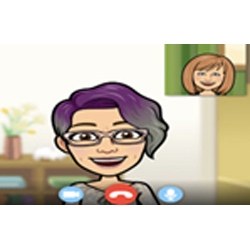
AAC Girls is the companion to the website, AAC Intervention. This site shares quick posts, tips and a list of Bilingual Spanish-English apps and manufacturers.
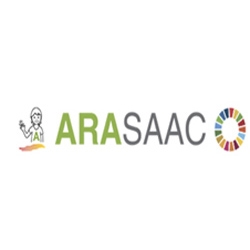
This website offers ARSAAC graphic symbols free of charge, and materials to support communication and language development in Spanish and multiple languages. Of special interest in the icon library, tools to customize the icons, and the multiple resources for assessment and intervention in Spanish.
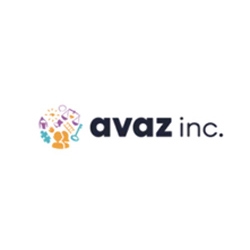
Avaz AAC is a picture and text-based widely used in India that supports six Indian languages, Sri Lankan languages, English, French, Danish, Swedish and Icelandic.

Colorín Colorado is a national multimedia project that offers a wealth of bilingual, research-based information, activities and advice for educators and families of English language learners (ELLs).

CoughDrop is open source, and incorporates open-licensed content like free symbols and community-generated boards, and all our vocabulary sets are released under a Creative Commons license. CoughDrop is also a collaboration tool for teams who support each communicator, with built-in reports, goals, messaging and video-recording too.
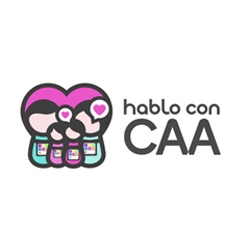
Hablo con CAA has created a curated list of resources for professionals and families in Spanish for children with complex communication needs.
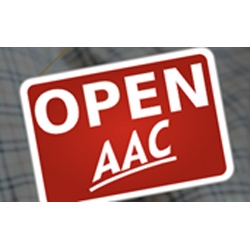
Open AAC is an initiative by the developers of CoughDrop to create open-licensed resources and tools to support AAC users. Open AAC includes OpenSymbols, a collection of open-licensed picture symbols to represent many cultures and languages across the world and currently includes access to more than 50,000 symbols and icons.
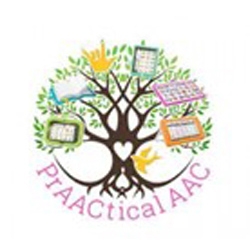
PrAACtical AAC, founded by Carole Zangari and Robin Parker, supports a community of professionals and families who are determined to improve the communication and literacy abilities of people with significant communication difficulties

Puentes Culturales has offered cultural competency analysis, educational programs, professional development, interpretation and translation services throughout the United States for more than 18 years.

The Centre for AAC at the University of Pretoria, South Africa, is devoted to research and teaching on issues at the intersection of disability, augmentative and alternative communication, early childhood intervention, and cultural and linguistic diversity.

The Center for Applied Linguistics is a nonprofit organization promoting access, equity and mutual understanding for linguistic and culturally diverse people around the world.
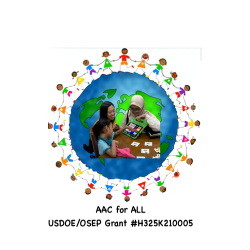
The School Year of Core-Bilingüe (SYOC-B) is the Spanish adaptation of the English School-Year of Core (SYOC), a series of resources for teaching core vocabulary words to children who use AAC.

Vanderbilt Kidtalk is a research group studying language growth in young children with disabilities at Vanderbilt University. Their website provides a number of resources including ones on Enhanced Milieu Teaching in both English and Spanish.
For PDF files, you'll need Adobe Acrobat 5.0 or above to view it. If you need Adobe Acrobat Reader it's available free from Adobe.